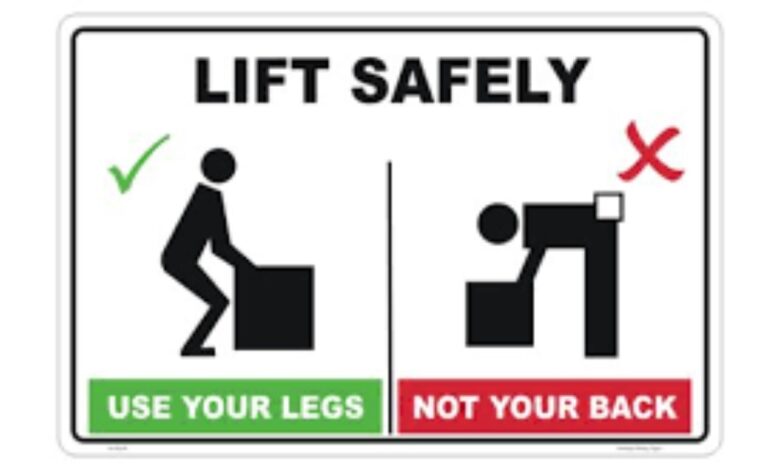
Every day, millions of people step into elevators without giving a second thought about their safety. Yet, behind every ride, there are crucial inspections and signs ensuring reliability. Among these, this sign shows when a lift is safe to use—a certification notice or inspection label placed inside or near the lift. Recognizing this sign is essential because it confirms that the elevator has passed safety checks, is legally compliant, and is fit for public use.
Understanding the meaning and importance of this safety sign not only improves confidence for passengers but also prevents accidents and legal issues for building owners.
This Sign Shows When a Lift Is Safe to Use
When you enter an elevator, you may notice a framed certificate, a colored sticker, or a digital notification inside the cabin. This sign shows when a lift is safe to use by indicating that:
-
The lift has undergone recent inspection
-
All components meet local safety codes
-
The elevator can carry the designated load safely
-
Emergency systems such as brakes and alarms function properly
These inspection signs are often mandatory by law and renewed annually or semi-annually depending on jurisdiction. Without this sign, the elevator may be unsafe, untested, or even illegal to operate.
What the Lift Safety Sign Looks Like
The design of lift safety signs varies from country to country, but common elements include:
-
Certificate of Operation issued by an official authority
-
Inspection Date showing when the last check was performed
-
Next Due Date for the upcoming inspection
-
Maximum Capacity for passengers and load weight
-
Unique Lift ID Number for traceability
Some buildings now display digital QR codes instead of paper signs, allowing passengers to scan and verify safety compliance in real time.
Why the Lift Safety Sign Is Important
Legal Compliance
Building owners are legally required to display inspection results. Missing or outdated signs may lead to fines or closure of the lift.
Passenger Confidence
A visible, valid safety sign reassures passengers that the lift is trustworthy and secure.
Accident Prevention
Routine inspections reduce the chances of accidents caused by faulty brakes, cables, or door systems.
Emergency Preparedness
Inspectors also verify that alarms, intercoms, and backup systems work—critical during emergencies.
How Inspectors Determine Lift Safety
The sign isn’t just a piece of paper—it reflects a thorough inspection process. Typical checks include:
-
Mechanical Integrity – Cables, pulleys, brakes, and motors
-
Electrical Systems – Control panels, backup power, alarms
-
Load Testing – Ensuring the lift handles maximum weight safely
-
Door Operation – Sensors, closing force, timing
-
Emergency Functions – Fire recall system, intercoms, lighting
-
Ride Quality – Smooth operation, noise, vibration levels
Only after passing these evaluations is the certificate updated to show the lift is safe for use.
What Happens If the Sign Is Missing
If you don’t see a valid safety sign inside the lift:
-
Do not use it—the elevator may not have passed inspection
-
Report to building management immediately
-
Authorities may shut it down until compliance is restored
In many regions, missing or expired signs indicate the elevator has been “red-tagged” (unsafe).
Global Standards for Lift Safety Signs
Europe
In the EU, elevators must comply with the Lift Directive (2014/33/EU). Safety certificates are prominently displayed inside cabins.
United States
Elevators fall under ASME A17.1 and OSHA regulations. Certificates of operation are usually posted inside or nearby.
Asia
Countries like India, Singapore, and Japan mandate annual inspections by government-approved engineers, with the certificate displayed in the lift.
Middle East
Dubai and Saudi Arabia require visible inspection stickers renewed yearly, showing maximum load and latest inspection.
Common Problems Found During Lift Inspections
-
Worn brake systems that may delay stopping
-
Overloaded usage beyond maximum capacity
-
Faulty door sensors risking injury
-
Power backup failures during outages
-
Expired safety components like cables or pulleys
These issues can result in the sign being withheld until repairs are ade.
How Passengers Can Use the Safety Sign
-
Check dates: Make sure the inspection is recent and valid
-
Confirm load limit: Avoid overcrowding the lift beyond stated capacity
-
Look for certification authority: Ensure the sign is from a trusted regulator
-
Report discrepancies: Inform building management of expired or missing signs
By reading the sign, passengers take an active role in elevator safety.
Digital Transformation of Lift Safety
Technology is changing how this sign shows when a lift is safe to use. Instead of paper certificates, smart lifts now feature:
-
QR Codes that link to official government databases
-
Digital dashboards on lift panels showing compliance
-
IoT sensors sending real-time data to regulators
-
AI-based monitoring predicting failures before they occur
This not only improves transparency but also reduces fraudulent or expired signs.
Responsibilities of Building Owners
Building owners must:
-
Schedule timely inspections
-
Display certificates where visible
-
Perform preventive maintenance
-
Report incidents immediately
-
Replace outdated signs without delay
Failure to comply risks penalties, lawsuits, or accidents.
Safety Tips for Passengers
-
Always check if the certificate is valid
-
Avoid overcrowding the lift
-
Press the alarm button if trapped
-
Stand clear of doors while closing
-
Report any unusual noises or jerks
FAQs
What does it mean if this sign shows when a lift is safe to use?
It means the elevator has passed safety inspection and is legally certified for operation.
How often are lift safety signs updated?
Most countries require inspections annually, though high-use lifts may need more frequent checks.
Can I use a lift without a safety sign?
No, it may be unsafe or illegal to do so. Always check for a valid certificate.
Who conducts lift inspections?
Government-approved inspectors or certified engineers carry out checks.
What happens if the inspection fails?
The lift is shut down until repairs are complete and it passes re-inspection.
Are digital safety signs reliable?
Yes, QR-coded certificates often link directly to official government records.
Conclusion
This sign shows when a lift is safe to use by confirming inspections, compliance, and safety standards. It serves as a visible guarantee for passengers and a legal responsibility for building owners. Ignoring it puts lives at risk.
With advancements like digital certificates and real-time monitoring, the future of lift safety is becoming smarter and more transparent. As passengers, simply taking a moment to check this sign could prevent accidents and ensure a safe journey.




